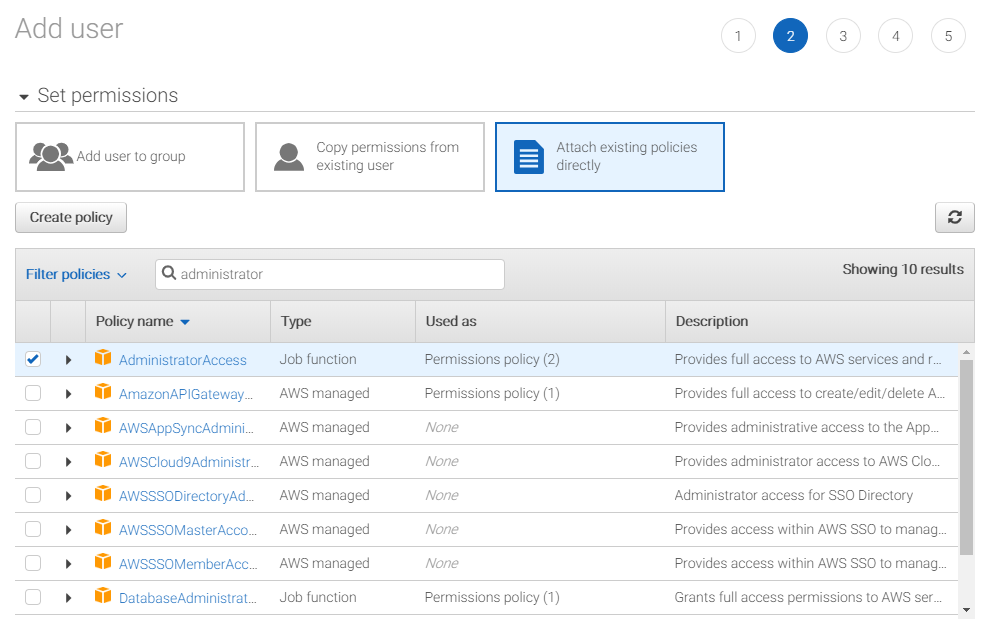Generate Ses Iam User Access Keys
Install AWS CLI, create a new AWS IAM user for SES, configure and add SES user policy, create user’s IAM access keys, obtain SES SMTP credentials by converting AWS IAM credentials, configure SSMTP and send a test email. This article assumes you already have the following: AWS SES account configured for production access. Jan 14, 2017 - How To Generate Amazon AWS Access Key ID and Secret Access Key 2017 In this video you will learn how to generate Amazon AWS Access. Jul 12, 2019 To create an access key for the AWS root user, you will first have to log in to the AWS system using the root user credentials. If you typically use.
- Generate Ses Iam User Access Keys Free
- Generate Ses Iam User Access Keys 2016
- User Access Control
- Generate Ses Iam User Access Keys 2017
Install AWS CLI, create a new AWS IAM user for SES, configure and add SES user policy, create user’s IAM access keys, obtain SES SMTP credentials by converting AWS IAM credentials, configure SSMTP and send a test email.
- If the IAM user will be using the SMTP interface, you must allow access to ses:SendRawEmail at a minimum. Restricting Email Addresses If you want to restrict the user to specific email addresses, you can use a Condition block.
- Oct 06, 2018 AWS #KMS - Key Management Service - Customer Master Key, Data Key, Envelope Encryption (Part 1) - Duration: 29:44. KnowledgeIndia AWS Azure Tutorials 20,983 views.
Before We Begin
This article assumes you already have the following:
- AWS SES account configured for production access.
- A verified AWS SES sender (i.e. [email protected]).
- An IAM user’s credentials with at least the following permissions set:
Installation (Debian Wheezy)
Install awscli: /generate-ssh-key-for-sourcetree.html.
Configuration
Configure awscli if using for the first time:
Create a SES user policy:
Create a new IAM user for SES:
Add a SES policy:
Create access keys:
Obtain Amazon SES SMTP Credentials by Converting AWS Credentials
Install OpenSSL and git.
Get a bash SES SMTP converter from GitHub:
Change to folder and make the script executable:
Convert an IAM secret access key to a SES SMTP password:
Note: you can also obtain Amazon SES SMTP credentials by using the Amazon SES console.
Configuring SSMTP and Sending a Test Email
Install SSMTP and heirloom-mailx (an intelligent mail processing system):
Confgiure SSMTP to use AWS SES:
Send a test email:
This Python example shows you how to manage the access keys of your users.
The Scenario¶
Users need their own access keys to make programmatic calls to AWS from the Amazon Web Services (AWS)SDK for Python. To fill this need, you can create, modify, view, or rotate access keys(access key IDs and secret access keys) for IAM users. By default, when you create an access key, itsstatus is Active, which means the user can use the access key for API calls.
In this example, Python code is used to manage access keys in IAM. The code uses the AWS SDK for Pythonto manage IAM access keys using these methods of the IAM client class:
- create_access_key.
- paginate(UserName='IAM_USER_NAME').
- get_access_key_last_used.
- update_access_key.
- delete_access_key.
For more information about IAM access keys, see Managing Access Keysin the IAM User Guide.
All the example code for the Amazon Web Services (AWS) SDK for Python is available here on GitHub.
Prerequisite Task¶
To set up and run this example, you must first configure your AWS credentials, as described in Quickstart.
Create Access Keys for a User¶
Create a new AWS secret access key and corresponding AWS access key ID for the specified user. Thedefault status for new keys is Active.
The example below shows how to:

- Create a new AWS access key usingcreate_access_key.
Example¶
List a User's Access Keys¶
List information about the access key IDs associated with the specified IAM user. If there are none,the action returns an empty list.
If the UserName field is not specified, the UserName is determined implicitly based on the AWS accesskey ID used to sign the request. Because this action works for access keys under the AWS account,you can use this action to manage root credentials even if the AWS account has no associated users.
The example below shows how to:
- List a user's access keys usingpaginate(UserName='IAM_USER_NAME').
For more information about paginators see, Paginators
Example¶
Get the Access Key Last Used¶
Get information about when the specified access key was last used. The information includes thedate and time of last use, along with the AWS service and region that were specified in the last requestmade with that key.
The example below shows how to:
- Get the access key last used usingget_access_key_last_used.
Example¶
Generate Ses Iam User Access Keys Free
Update Access Key Status¶
Change the status of the specified access key from Active to Inactive, or vice versa. This actioncan be used to disable a user's key as part of a key rotation work flow.
The example below shows how to:
- Change the status of an access key to Active usingupdate_access_key.
Example¶
Generate Ses Iam User Access Keys 2016
Delete an Access Key¶
Delete the access key pair associated with the specified IAM user.
If you do not specify a user name, IAM determines the user name implicitly based on the AWS accesskey ID signing the request. Because this action works for access keys under the AWS account, you canuse this action to manage root credentials even if the AWS account has no associated users.
The example below shows how to:
User Access Control
- Delete an access key usingdelete_access_key.